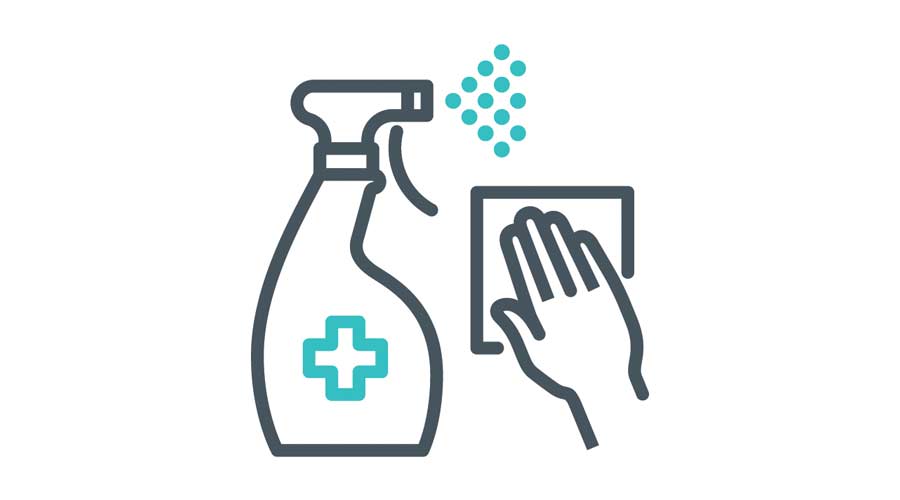
According to a report released from Research and Markets, the global surface disinfectant market is expected to grow at a rate of about 10 percent compound annual growth rate (CAGR) over the next six years (2022-2028) and reach a revenue of US$10 billion by 2028, owing to the growing incidences of healthcare-associated infections (HAIs). Furthermore, an increase in product demand from non-healthcare industries, health clubs and gyms, and the outbreak of COVID-19 is likely to drive the growth of the market during the forecast period.
For instance, the rising geriatric population and the prevalence of chronic illnesses such as blood pressure, obesity, diabetes, and heart disorders have been fueling the demand for surface disinfectants across healthcare facilities. As per a Centers for Disease Control (CDC) report published in 2018, HAIs cause about 1.7 million infections and 99,000 related deaths every year in America.
Furthermore, increasing product demand from non-healthcare settings like gyms, various types of industries, and offices is also driving the growth of this market.
Chemical surface disinfectants have some adverse impacts on the environment and acts as a major barrier for growth. For instance, hydrogen peroxide used in chemical surface disinfectants can cause portal vein thrombosis, gastrointestinal problems, mild mucosal irritation, and vomiting. According to a study conducted by the National Library of Medicine, in the United States, Australia, the United Kingdom, and Sweden 15.7 percent of the general population, and 32.9 percent of asthmatics, report health problems from being in a room after it has been cleaned by fragranced products which include surface disinfectants.
The outburst of COVID-19 had a positive impact on the surface disinfectants market. The pandemic increased the need for surface disinfection and cleaning practices significantly. Multiple measures were being taken to curb the spread of the deadly virus, including disinfection and sanitizing surfaces. This increased the demand for surface disinfectants across the globe.
The report is segmented by: Composition Type, Form, Application type, and End-User. In addition, the report also covers market size and forecasts for the world's major regions' surface disinfectant markets.
Key Trends by Market Segment
• By Composition: The chemical composition segment dominated the global surface disinfectant market in 2021 and is estimated to continue being the dominant segment during the forecast years
• Biobased surface disinfectants are viewed as alternatives to their chemical counterparts owing to their non-toxic, biodegradable, and eco-friendly characteristics and are expected to have a higher CAGR during the forecast period
• By Form: The liquid form segment holds the highest market share in 2021 and is expected to remain dominant during the forecast period. This high share is attributed to a wider applications of liquids in the industrial as well as the household sector for kitchen fixtures, glazed ceramic tile, windows, plastics, exterior surfaces of applications, vinyl, and glass. However, the spray form disinfectant segment is gaining popularity because of its easy application.
• By Application Type: The In-house application segment holds the largest market share in 2021 in the global surface disinfectant market and is expected to remain dominant during the forecast period. The large market share of this segment is attributed to the wide usage of surface disinfectants in the premises of hospitals & clinics, households, residential areas, industries, and commercial spaces.
• By End-user: The Hospital & Clinics segment is estimated to account for the largest market share in the global surface disinfectant market during the forecast period due to their vulnerability to infections caused by viruses, bacteria, and fungi.
• By Geography: North America accounted for the largest market share in 2021 among all regions within the total global surface disinfectant market.
• The increasing healthcare expenditure in North America and an increase in the number of temporary hospitals are some of the major factors boosting the demand of surface disinfectants in North America.
Access more insights through the entire report, available here.

 Celebrating BSCAI's 60th Anniversary eBook
Celebrating BSCAI's 60th Anniversary eBook The Down and Dirty on Cleaning in Virus Season
The Down and Dirty on Cleaning in Virus Season How Surfactant Use is Expanding in Commercial Cleaning
How Surfactant Use is Expanding in Commercial Cleaning